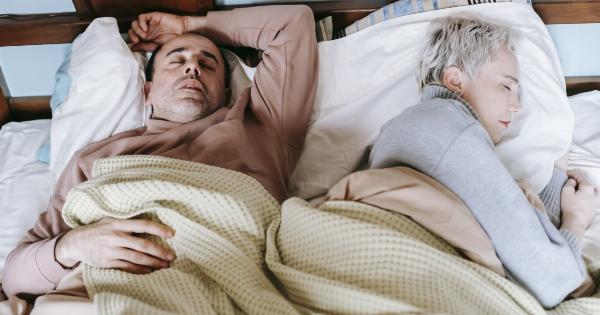The Mystery of Sleep Drillion: Explained
Sleep has always been a fascinating and mysterious phenomenon that humans experience on a daily basis. Every night, our bodies enter a state of rest, allowing our minds and bodies to rejuvenate.
While the concept of sleep is universal, there are still aspects that remain unexplained. One such enigma is Sleep Drillion, a term that has been gaining attention in recent years. In this article, we delve into the mystery of Sleep Drillion and attempt to unravel its secrets.
What is Sleep Drillion?
Sleep Drillion refers to a hypothetical phenomenon that occurs during a specific stage of sleep. It is believed to be a rare occurrence, affecting only a small percentage of the population.
Those who have experienced Sleep Drillion report vivid and bizarre dreams that feel incredibly real. These dreams can sometimes blur the line between reality and the dream world, leading to confusion and a sense of unease upon waking.
The Importance of Sleep
Sleep plays a crucial role in maintaining our overall health and well-being. It is during sleep that our bodies repair damaged tissues, consolidate memories, and regulate various bodily functions.
Without sufficient sleep, our cognitive abilities, mood, and immune system can be greatly impacted.
The Stages of Sleep
Sleep is divided into different stages, each with its own characteristics and functions:.
1. Stage 1: NREM Sleep
Stage 1 is the transition phase between wakefulness and sleep. It is a light sleep stage where the brain produces theta waves. This stage is relatively short and accounts for approximately 5% of total sleep time.
2. Stage 2: NREM Sleep
In Stage 2, the brain waves continue to slow down, and sleep spindles and K-complexes appear. This stage makes up a significant portion of our sleep cycle.
3. Stage 3: NREM Sleep
Stage 3 is also known as deep or slow-wave sleep. During this stage, the brain produces delta waves, and it is the stage where restorative processes occur, including cell regeneration and growth.
4. REM Sleep
REM (Rapid Eye Movement) sleep is the stage where most dreaming occurs. The brain becomes highly active, similar to the awake state, and our muscles become temporarily paralyzed to prevent us from acting out our dreams.
Sleep Disorders and Sleep Drillion
While Sleep Drillion is not recognized as an official sleep disorder in medical literature, its characteristics bear similarities to certain sleep conditions.
It could potentially be related to REM sleep behavior disorder (RBD), a condition where people physically act out their dreams due to the failure of muscle paralysis during REM sleep.
Other sleep disorders such as sleepwalking, sleep talking, and night terrors may also share some overlapping features with Sleep Drillion.
Further research is needed to determine the exact nature of Sleep Drillion and its relationship with these disorders.
Unraveling the Mystery: Theories and Explanations
Although the phenomenon of Sleep Drillion remains mysterious, several theories have been proposed to explain its occurrence:.
1. Activation-Synthesis Theory
According to this theory, dreams, including those experienced during Sleep Drillion, are a result of random brain activity and do not possess any inherent meaning.
The brain attempts to make sense of these random signals by creating a narrative or storyline.
2. Lucid Dreaming
It is possible that Sleep Drillion is a form of lucid dreaming, where individuals become aware that they are dreaming while they are still in the dream state.
Lucid dreaming allows for greater control and clarity within dreams, leading to a heightened sense of realism.
3. Overactive Imagination
Some experts suggest that individuals who experience Sleep Drillion may have an overactive imagination or a highly creative mind.
This overactivity of the brain’s imaginative faculties during sleep could result in incredibly vivid and immersive dream experiences.
4. Neurochemical Imbalance
A neurochemical imbalance in the brain, particularly involving neurotransmitters such as serotonin and dopamine, could contribute to the occurrence of Sleep Drillion. These neurotransmitters play a vital role in regulating sleep and dreaming processes.
Tips for Achieving Better Sleep
Whether you have experienced Sleep Drillion or simply want to improve the quality of your sleep, here are a few tips that may help:.
1. Stick to a Consistent Sleep Schedule
Go to bed and wake up at the same time every day, even on weekends. This helps regulate your body’s internal clock and promotes better sleep.
2. Create a Relaxing Bedtime Routine
Engage in calming activities before bed, such as reading a book or taking a warm bath. This signals to your body that it’s time to unwind and prepare for sleep.
3. Ensure a Comfortable Sleep Environment
Make sure your bedroom is dark, quiet, and at a comfortable temperature. Use earplugs, eye masks, or white noise machines if necessary to block out disruptions.
4. Avoid Stimulants Before Bed
Avoid consuming caffeine, nicotine, or alcohol close to bedtime, as these substances can interfere with your sleep patterns.
5. Establish a Wind-Down Period
Give yourself at least an hour of quiet time before bed to relax and prepare for sleep. Avoid engaging in stimulating or stressful activities during this period.
6. Regular Exercise
Engage in regular physical exercise, but avoid intense workouts close to bedtime, as it may make it harder for you to fall asleep.
7. Create a Sleep-Friendly Bedroom
Invest in a comfortable mattress, pillows, and bedding that suit your preferences. Keep your bedroom clutter-free and optimize the environment for sleep.
8. Manage Stress and Anxiety
Practice relaxation techniques such as deep breathing, meditation, or yoga to help reduce stress and anxiety, which can interfere with sleep.
9. Limit Screen Time
Avoid exposing yourself to electronic screens, including smartphones, tablets, and TVs, in the hour before bed. The blue light emitted by these devices can disrupt your sleep-wake cycle.
10. Consult a Professional
If you have persistent sleep issues or suspect a sleep disorder, it is advisable to consult a sleep specialist or healthcare professional for a proper evaluation and guidance.
Conclusion
The phenomenon of Sleep Drillion continues to intrigue scientists and sleep enthusiasts alike. While its exact nature and causes remain largely unknown, exploring its mysteries contributes to our understanding of sleep and dreams.
Sleep, a fundamental aspect of our lives, plays a vital role in our overall well-being. By prioritizing good sleep hygiene and seeking professional help when necessary, we can strive towards achieving better sleep and experiencing its countless benefits.




























